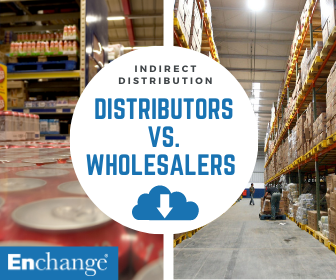If you ask any sports person who has played a contact sport, how to avoid getting hurt, very often you will be told to try your best not to get hit. In order to avoid the hits, you need to understand more about them including when they are likely to come, from which direction, how big they are likely to be, how badly they will affect me, how long the affects will last and so forth.
 If you really examine these questions and you know the answers to them, it is only then that you can really prepare yourself.
If you really examine these questions and you know the answers to them, it is only then that you can really prepare yourself.
The same can be said for managing FMCG distributors. You need to know how their actions, or lack of actions, can affect your business.
So, what are the biggest challenges a Consumer Packaged Goods (CPG) company could face when managing the ‘last mile’ of the Route to Market (RtM)?
Here are a ‘Top 10’ to kick off your discussions.
- Competition: The distributor may have their own product range in direct competition with you.
- Credit: The distributor buys from you on credit to use those funds to finance other businesses or simply does not pay your invoice.
- Volume: Your sales are declining with a specific distributor, and the distributor does not know why. Alternatively, the distributor buys from you, meets the sales quota, but there is no sell out or push into any retail channel.
- RtM Strategy: The distributor does not understand or appreciate your strategy.
- Coverage & Data: The distributor does not know how many retail outlets are in their patch and they are not providing you with retail outlet sales data.
- Sales Territory: One or more of your distributors are competing in the same space using your product and are not respecting the agreed territories.
- Agreements: There is no formal Trading Terms & Conditions (TTC) agreement in place with key deliverables and milestones, or the distributor is not respecting the TTC that are in place.
- Retail Outlet Segmentation: The marketplace changes and there is a shift in consumer shopping behaviour (as we are currently seeing during the pandemic) but the distributor does not take any account of this.
- Channel: Your distributor is ignoring significant sales opportunities as they do not understand or have an effective Channel Strategy.
- Partnership: Your distributor does not engage with you for Joint Business Planning (JBP) or Joint Action Planning (JAP).
I could have added dozens more to the above list of 10, but this gives us a good place to start to understand where the ‘hits’ may come from. The above 10 are approached from the viewpoint of what the distributor is, or is not, delivering.
However, the issue can lie with what the CPG company is doing, or how the company is managing and working with their distributors. For example, we must classify our channel partners and not treat distributors like wholesalers. If you want to know more on this you can download our guide to better understanding indirect distribution - FMCG Distributors & Wholesalers.
In my next blog, I will discuss what you must do to improve distributor management to deliver excellence in RtM execution and to ensure we avoid the above ‘hits’.
What should you do now?
- If you need specific help on Retail Store Segmentation or any RtM issue, please reach out to me
- You may want to use our 20 Steps to Route to Market Excellence model to give you inspiration on your RtM journey.
- As we always say at Enchange, NOW is the time to be reviewing, building and/or transforming your RtM Strategy and Execution to reap the rewards. Do not wait. Feel free to use our 20 Steps to Route to Market Excellence Implementation Guide to help you.








